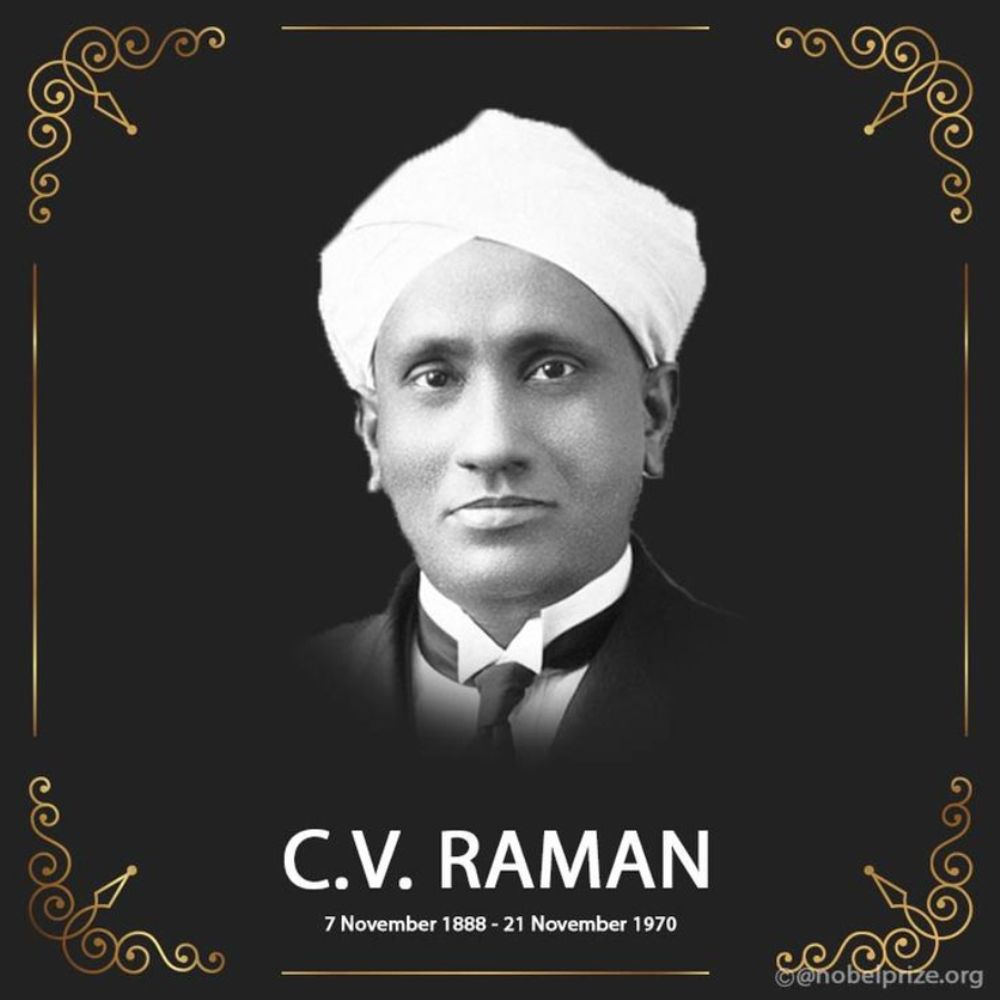

ThiIndian physicist Sir Chandrasekhara Venkata Raman is well-known for his contributions to the study of light scattering. On November 7th, 1888, he was born in Tiruchirapalli, Southern India. He was raised in an academic environment because his father was a lecturer in mathematics and physics. He and his student K.S. Krishnan found that light travels through transparent materials and changes its wavelength and frequency using a spectrograph they constructed. Raman was the first Asian to win a Nobel Prize in any field of science when he was awarded the 1930 Physics prize for his discovery.

Achievements: He was the first Indian scholar to win the Nobel Prize after completing all of his studies there. He got it for his research on light scattering and for the discovery of the effect that bears his name.
Awards:
1. (1924) Fellow of the Royal Society
2. (1928) Matteucci Medal
3. 1930's Knight Bachelor
4. Hughes Award in 1930
5. Physics Nobel Prize in 1930
6. 1954's Bharat Ratna
7. 1957 Lenin Peace Prize
Principle of Raman Scattering: The raman spectroscopy method is based on the idea that when monochromatic light passes through a substance, it may be reflected, absorbed, or scattered. The vibration and rotational properties of the scattered photons cause them to have a different frequency from the incident photon. The IR spectra are used to study the change in wavelength that arises from this. Raman shift refers to the variation between the incident photon and the dispersed photon. The scattering is referred to be Stokes scattering when the energy of the scattered photons is lower than the energy of an incident photon. Anti-Stokes scattering is a type of scattering that occurs when the energy of the scattered photons exceeds the energy of the incident photon.
Application of Raman Spectroscopy :
Pharmaceuticals and cosmetics: Dispersion of a compound in tablets, blend consistency, high throughput screening, powder content and purity, API concentration, Verification of raw materials, multifaceted shapes, Combination chemistry, contaminant identification, and crystallinity Skin depth profiling and in vivo analysis, consistency in dosage and content.
Geology and Mineralogy: Identification of minerals and gemstones, inclusions in fluid distribution of minerals and phases in rock sections, phase changes, mineral behaviour in harsh environments, Identification of chondrite and achondrite meteorites.
Carbon materials: Hard drives, Diamond like carbon(DLC) coating qualities, Purity of carbon nanotubes(CNTs), Electrical properties of carbon nanotubes(CNTs), Sp2 and Sp3 structure in carbon material, Defect/disorder analysis in carbon materials, Diamond quality and origin, Electrical characteristics and the quantity of graphine layers.
Life Sciences: Drug/cell interactions, photodynamic treatment (PDT), metabolic accretions, disease diagnosis, DNA/RNA analysis, and biocompatibility single-cell examination, cell separation, Bone structure and biomolecule characterization.
Thus the Raman effect, spectroscopy and scattering used in various fields. It is proud that he is an pride of our nation. He was died in November 21, 1970, at Bangalore.
